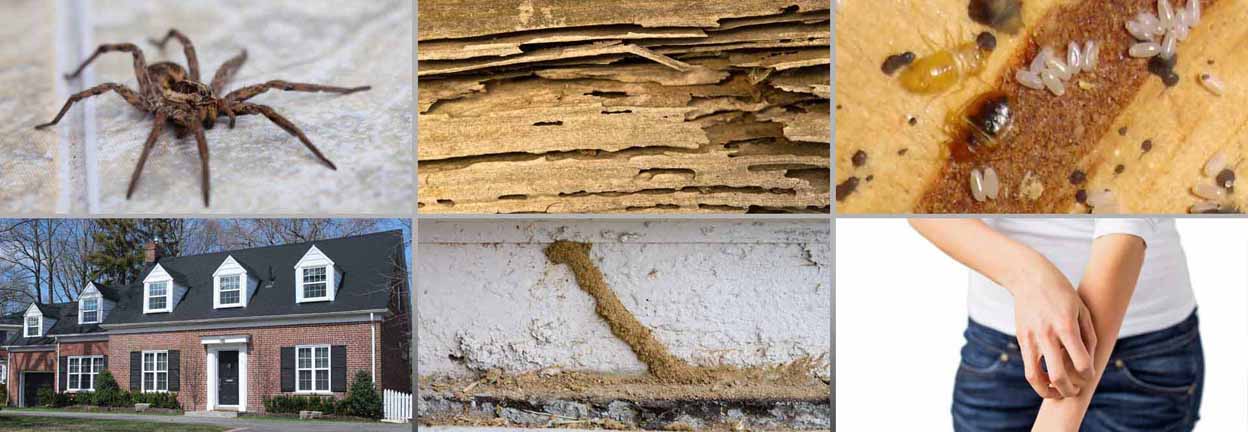There are over approximately 100 species of crickets in North America and about 900 species of crickets worldwide. Crickets belong to the family Gryllidae (sometimes referred to as “true crickets”) and are related to grasshoppers and katydids. They have slightly flattened bodies and long antennae. They have powerful hind legs for jumping and are sometimes confused with grasshoppers because of their similar body shapes. Crickets tend to be nocturnal and are not harmful to people.
Crickets are amongst a special group of insects and arthropods which produce sound by rubbing together two parts of the body. This behavior is known as stridulation and is the reason behind the characteristic sound you may refer to as “chirping. Many of us have been led to believe that crickets chirp by rubbing their legs together. In reality this sound is made by rubbing the top of one wing along the teeth at the bottom of the other wing. Sometimes female crickets chirp but usually it is the male crickets which produce this sound. The male crickets also hold their wings up and open to amplify the sounds. Crickets have tympanic membranes (also known as eardrums) found just below the middle joint on their front legs. This is what enables them to hear the other crickets during stridulation.
The speed at which a cricket chirps is determined by the species and the temperature of their environment. The higher the temperature is, the faster they are known to chirp. Dolbear’s Law is known as the relationship between the rate of chirping and the temperature of the environment. According Dolbear’s Law, you can count the number of chirps in a 14 second span from a snowy tree cricket (common in the U.S.) and by adding that to 40 you will have the approximate temperature in fahrenheit.
Like other insects crickets are cold-blooded, meaning the temperature of their surroundings affects the speed in which they react to their environment. This is most easily noticed in the rate at which they are chirping. The Arrhenius equation is used to describe the activation energy or threshold energy required to perform certain actions in cold blooded animals. For crickets, as temperatures fall, their bodies react slower. This causes characteristics like chirping to slow down.
Crickets are omnivorous scavengers which means they feed on organic materials such as decaying plant matter, fungi and some seedlings. When there are no other food sources available they are also known to eat their own dead and show predatorial behavior on crickets that are crippled and weak. They tend to find their way inside homes during the evenings and overnight because they are attracted to the warmth and the light from our homes. Once inside crickets may feed on and cause damage to cotton, linen, wool, silk and even fur. Materials that are soiled with food and perspiration are more likely to attract crickets. They have powerful jaws and there are a few species that have been known to bite humans.
Most crickets mate in the late summer, lay their eggs in autumn, and eggs hatch in the spring. The female chooses her mate based off which calling sound she is attracted to. The male releases a small white sperm packet and the female climbs on top of him to receive this packet. Another interesting fact about crickets is that some females can continue to mate with other male crickets, holding onto the packets she has received from the other males. Studies have recently shown that she has the ability to choose which one of these packets will fertilize her eggs. This helps to prevent inbreeding and lets the female choose who the most qualified partner for her offspring will be.
Crickets can not survive the winter unless they adjust their habitats. Most adult crickets and the younger generation will attempt to move indoors in the fall as colder weather arrives. Some crickets such as the field cricket have adapted to handle cold weather conditions by slowing the metabolism through a process known as diapause.
Crickets are attracted to the warmth of our homes, which can explain why you may be finding them in the warmest areas most frequently, such as your kitchen or near the furnace or water heater. Once they make their way inside they can also burrow into cracks around the home or even behind your baseboards. Most crickets will enter the home through cracks in the foundation, or gaps through low hanging windows or underneath doors. Locating and sealing off entrance points can reduce future populations by way of physical barrier.
Although there are many do-it-yourself products on the market (most of which do kill crickets) these products often prove ineffective at handling a persistent cricket problem. Effective control of crickets often requires the help of a pest management professional. Alert #1 is your local pest management professional.
The technicians at Alert #1 have many years of experience built upon the successful control of crickets in and around the home. We understand the the habits of crickets in our area, and know how to provide the most appropriate and effective solution for any situation.
The most successful and long term strategies for control typically involve the precise application of baits, specific sprays and even the occasional use of insecticide dusts. The specific product to be used, or method of application will depend on the type of infestation to be controlled. Correct identification is crucial to properly managing any pest. The professionals understand that while one or two crickets in the home will rarely cause harm, a high population of crickets is quite the nuisance and may even cause damage to some fabrics due to their chewing behavior.
Give the professionals a call today, and let one of our friendly experts help with your cricket problem. We offer a free inspection service for your home, will make the appropriate recommendations and if needed, help you by resolving the issue directly with one of our guaranteed services.



